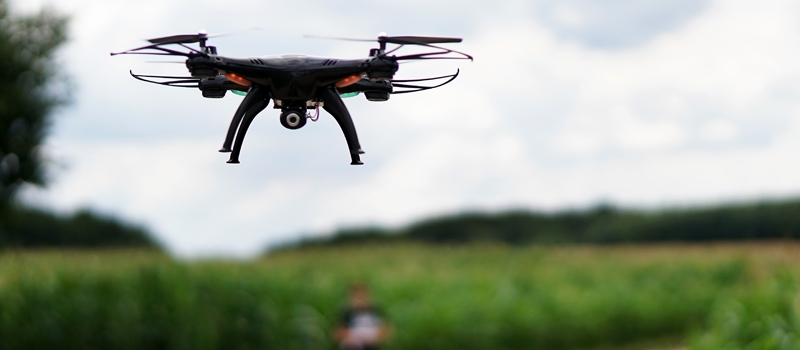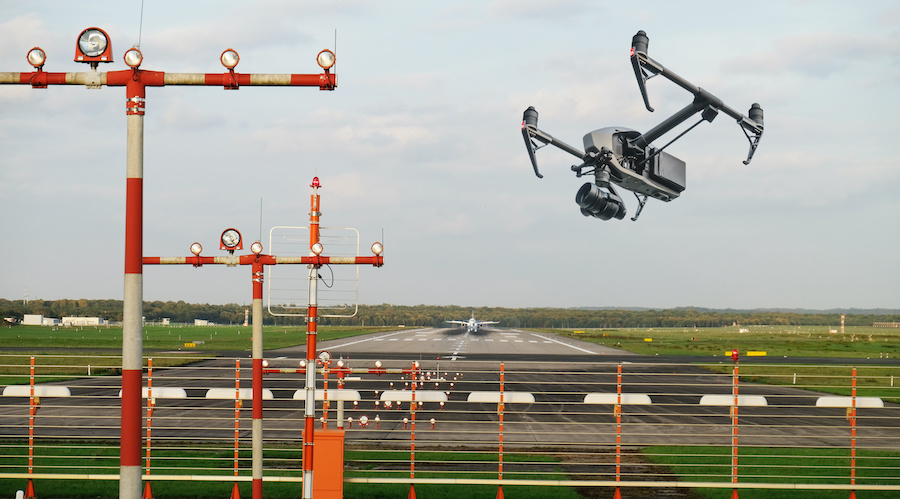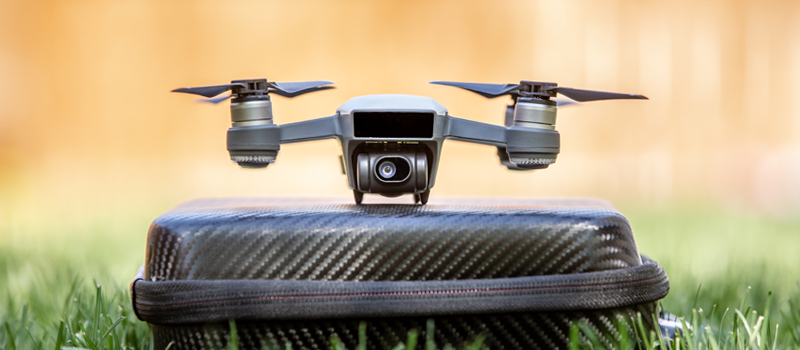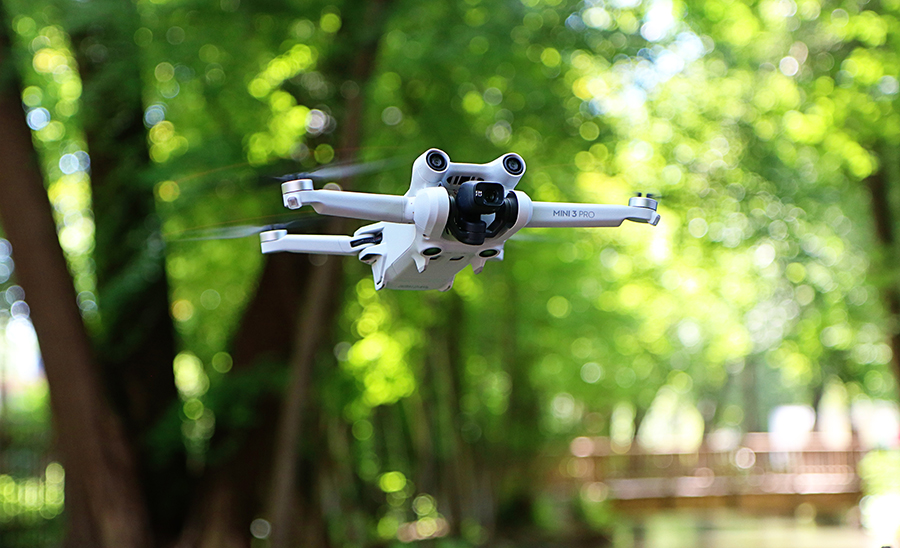Part of being a good drone pilot is understanding the aerodynamics of flight, particularly those that apply to multicopter aircraft. Knowledge of these phenomena may make the difference between recovering your drone safely or getting into a bad drone crash.
One such phenomenon is called a vortex ring state. This is something that multicopters, including drones and manned helicopters, are prone to experiencing. An aircraft caught in a vortex ring can suffer from a severe loss of lift, resulting in an uncontrolled descent. What is a vortex ring state and how can you spot it when it happens? What can you do if your drone gets caught in a vortex ring?
What is a vortex ring state?
A vortex ring state (alternatively called ‘settling with power’) is an aerodynamic condition where the rotors of a helicopter or multicopter or engulfed in a vortex ring. This results in a loss of lift and a subsequent loss of control. A vortex ring state can develop rather quickly and can occur in any type of multicopter and at any elevation.
To understand this phenomenon, we must first understand what a vortex ring is. A vortex ring is a vortex formed by any fluid (liquid or gas) that takes the shape of a torus or a donut. Along this ring, the fluid forms a closed loop by spinning around an axis line. This vortex ring can remain undisturbed even while in motion, as some of us may have seen with smoke rings – a common trick done by smokers.
In aerodynamics, vortex rings can be formed by the uplift and downlift created by the rotors of a multicopter aircraft. When this happens, the aircraft loses lift and accelerates downward. An inexperienced pilot may be tempted to increase power to the rotors to generate lift. However, this will only serve to increase the downwash passing through the center of the rotors, further accelerating the descent of the aircraft. It is theoretically possible to power out of a vortex ring state but this will require immense levels of power from the rotors.
Recovery from a vortex ring state is possible. Helicopter pilots have established protocols for how to recover from a vortex ring state, although there are also non-standard methods that seem to be effective. The more valuable skill for pilots is being able to recognize when the aircraft enters a vortex ring state so that they may respond promptly.
However, the window to recover can be very small as an aircraft under a vortex ring can descend very quickly. Even if you were able to recover, an aircraft undergoing a vortex ring state will inevitably lose significant altitude. With this in mind, it is better to avoid the onset of a vortex ring state than to recover from one when it develops.
Drone pilots frequently refer to vortex ring state as the “wobble of death”. When this happens, drones exhibit a characteristic wobble while rapidly losing altitude.
How are vortex rings formed?
Prevention is better than cure – this age-old wisdom applies to the formation of a vortex ring. However, pilots need to understand the mechanism behind the formation of a vortex ring to avoid such a situation.
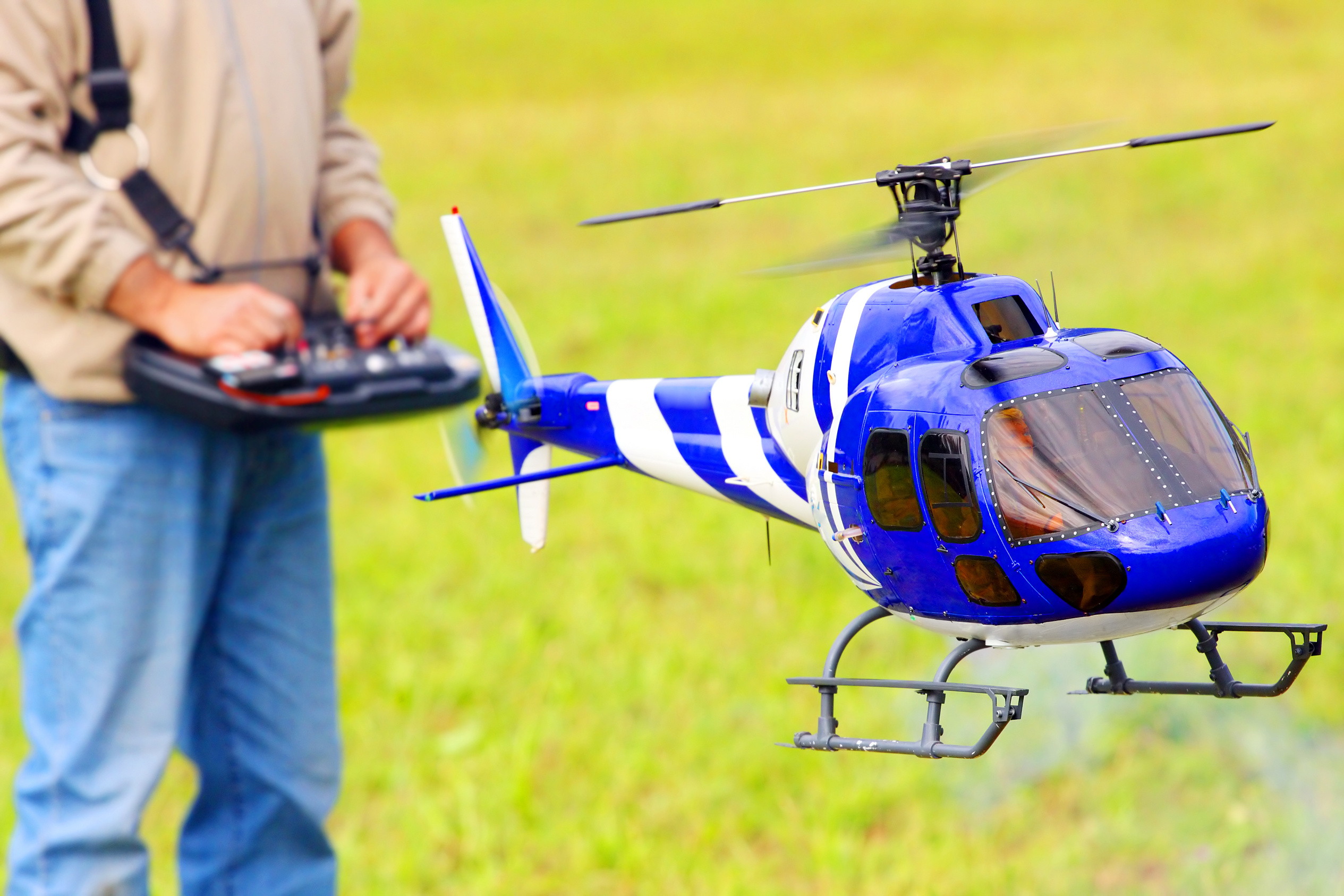
A vortex ring is formed when a mass of fluid moving at high speed is injected towards a mass of stationary fluid. Friction between the two different masses of fluids causes the moving fluid at the outer core of an imaginary toroid to slow down and rotate back towards the inner core. At the inner core, this fluid regains speed due to the continuous injection of mobile fluid.
In rotor-based flight, the vortex ring is formed by the air that the rotor pushes to generate lift. In this case, the vortex ring is formed around the outer edges of the rotors. This vortex ring moves with the rotors as the aircraft descends making it difficult for the pilot to regain control.
A vortex ring causes a loss of lift for the aircraft. Even worse, the air that the rotors are pushing contributes to the downwash that causes the aircraft to descend even faster. The downward movement of the aircraft further feeds the vortex ring. To regain control of the aircraft, the movement pattern of the vortex ring must be disrupted.
What factors promote the formation of a vortex ring?
There is a specific combination of factors that can make the formation of a vortex ring highly probable – a relatively high rate of descent coupled with slow forward speed. During descent, the upflow of air along the rotor tips is increased. When coupled with the downward lift being generated by the rotors, this aerodynamic combination becomes the foundation of vortex ring formation.
Another circumstance that makes vortex ring formation highly likely might be quite unique to drone flight. Under normal circumstances, the lift that drone rotors generate moves straight down with no chance of being reflected off any surface. However, this might not be the case if you’re trying to hover very near a rigid surface.
The deflection of air off a surface can cause localized vortex ring formation. This is one of the reasons why indoor drone flight can be very difficult. The effect of localized vortex rings may not be as dramatic but it will certainly create a momentary or prolonged loss of control. When flying in an indoor space, this lapse in control could be enough for the drone to crash into a nearby wall.
How to avoid or recover from a vortex ring state
If you fly drones frequently enough, then a vortex ring state is something that you will encounter eventually. Admittedly, modern drones are less vulnerable to vortex ring formation for reasons that we shall discuss later. Despite the advantage, it is still worth knowing the mechanism of a vortex ring state and how to recover from one.
Controlled rate of descent
The number one cause of vortex ring formation is an excessively high rate of descent. The older generations of drones from the era of the Phantom 3 were more prone to suffering from vortex ring state because of this phenomenon.
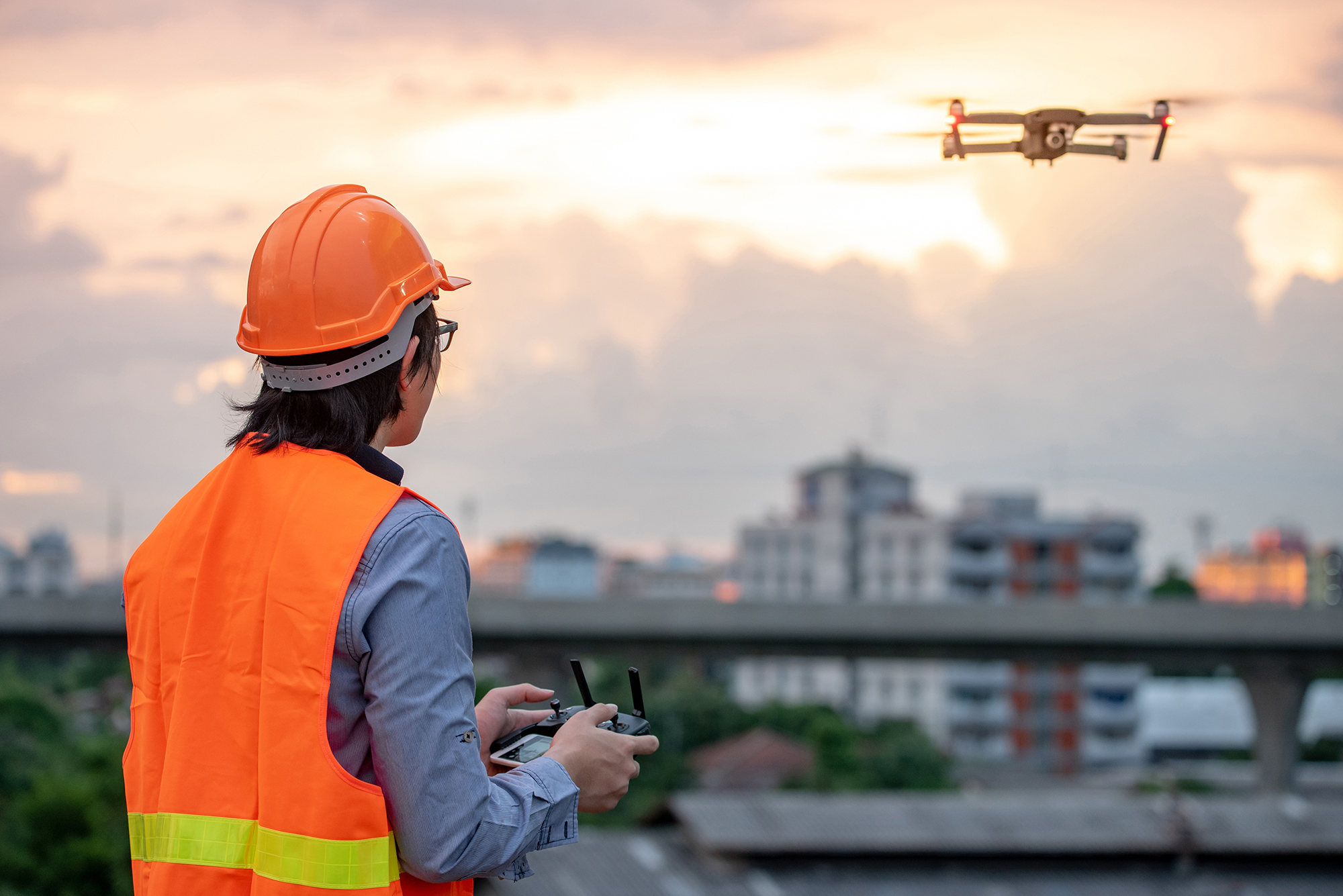
Newer drones have been pre-programmed with a maximum descent rate specifically to avoid the vortex ring state. Any drone that was launched with the original Mavic and other drones that were released later should already come with this feature. For this reason, a vortex ring is not something that many drone pilots experience nowadays. This is still not a guarantee that it will never happen – any significant updraft can still cause a vortex ring to form.
Angled rotors
Another design feature that helps prevent the vortex ring state is rotors that are canted or angled from the vertical. This means that it does not generate lift directed straight down. Instead, the lift from each rotor has both vertical and horizontal components. This should help disrupt a vortex ring or prevent one from forming in the first place.
This is a subtle design choice that may not be noticeable unless you’re looking closely. If you purchased your drone anytime within the last five years, there’s a good chance that it has canted motors.
Land with some forward motion
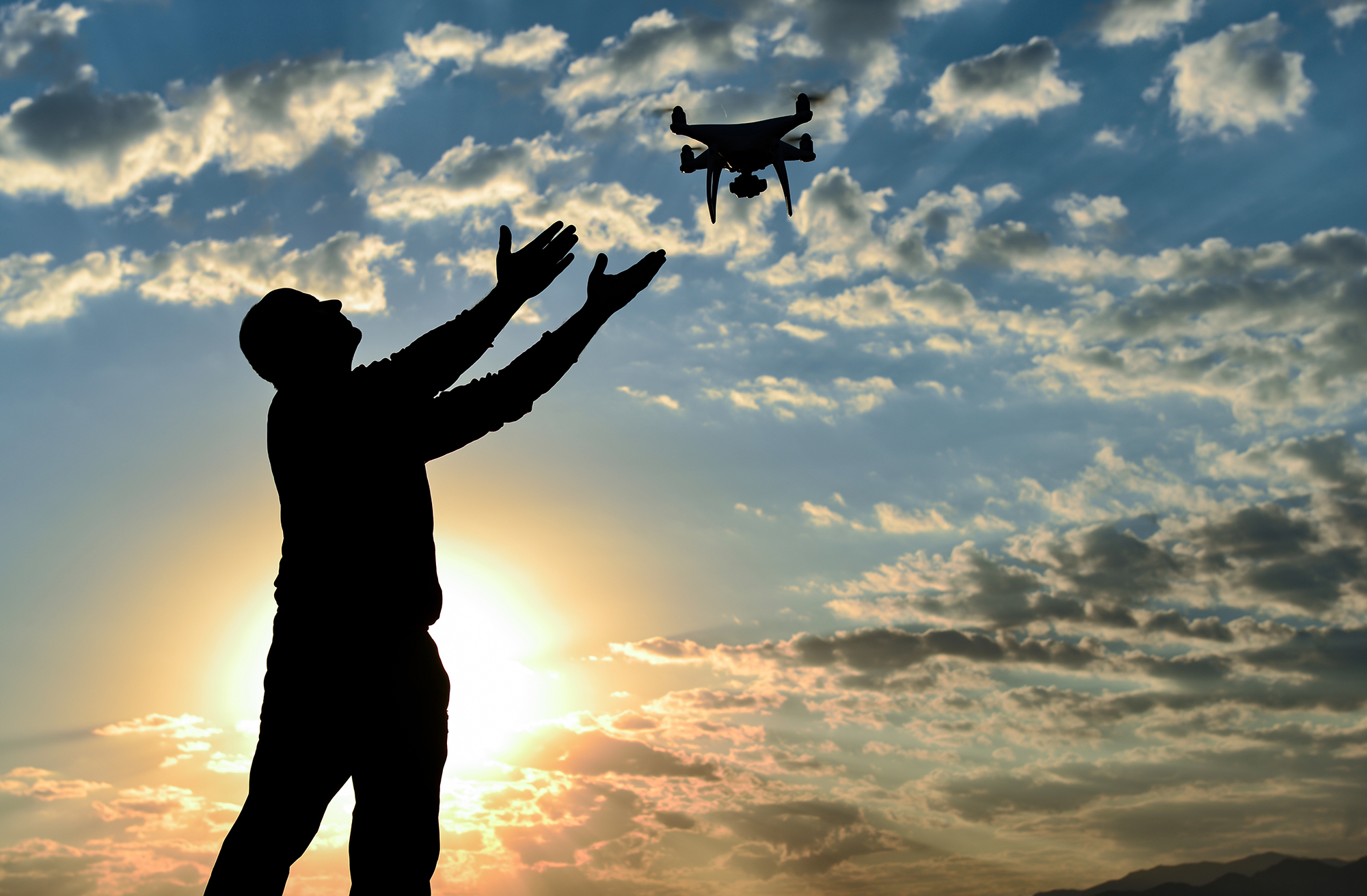
Although the firmware of drones should prevent you from descending fast enough to cause a vortex ring state, it is still considered good practice not to descend in a straight line vertically. We recommend descending gently with a forward motion towards your desired landing spot. If you do not have a corridor to do this, you can try descending in a spiral pattern.
Move sideways to recover
If your drone gets caught in a vortex ring, your best means to recover would be to move sideways or forward. This should ideally be enough to break up the vortex ring so that you can regain control.
The good thing about drones is that they create vortex rings that are so small that just shifting by a few inches would be enough to break them apart. This also means that recovery from a vortex ring state should be easier for ultra-portable drones rather than the larger models like the Phantom and Yuneec Typhoon drones.
As mentioned, it is easier to avoid the formation of a vortex ring than to try to recover from one. A momentary loss of your drone can very easily lead to a crash, especially if you are flying in close quarters.
Final thoughts
A vortex ring state is one of the most important aerodynamic phenomena that a drone pilot needs to understand. Any rotor-driven aircraft can go into a vortex ring state, causing it to lose altitude quickly.
Even if modern drones have safeguards against the formation of vortex rings, the very remote possibility of it happening is something that needs to be deliberately avoided and anticipated. By understanding how vortex rings form, we can better take actions to prevent it from happening. The nice thing about flying drones is that it’s also fairly easy to break free from a vortex ring.
